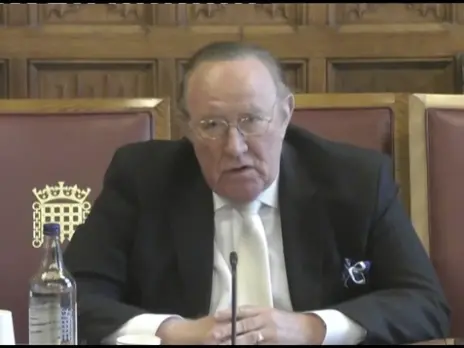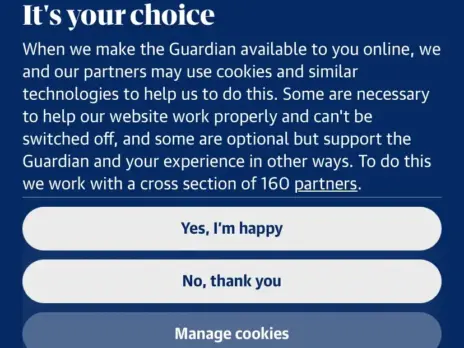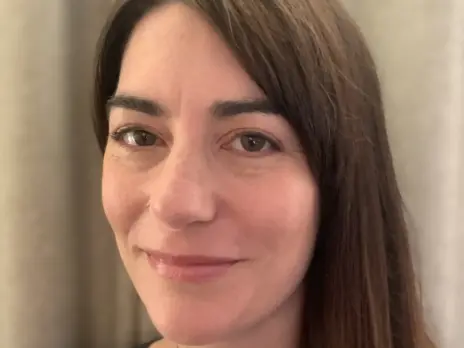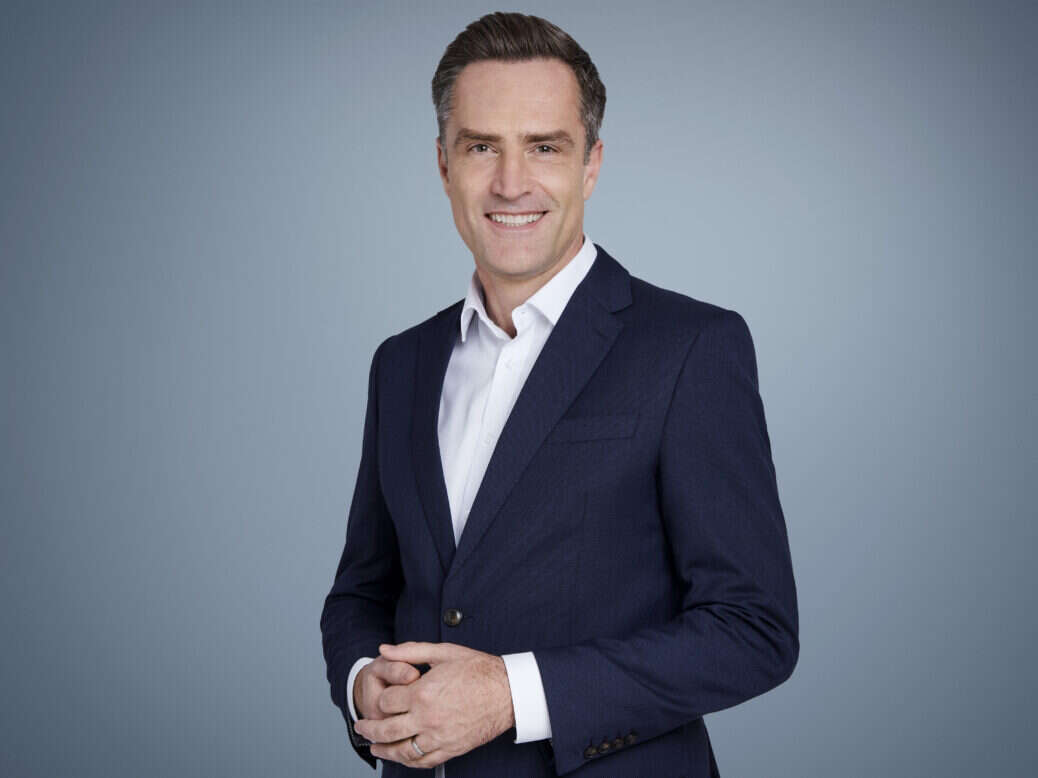
CNN anchor Max Foster joined TikTok in late 2019 with no professional strategy in mind – he only planned to check out the platform that had his three children hooked.
He did not expect to end up with more than 423,000 followers within two years – more than ten times his following on Twitter – and averaging around 20m views per month.
He is still one of the few journalists using TikTok as a news platform and is now preparing to use some of the lessons he has learned to refresh his daily CNN International programme anchored from London, CNN Newsroom
“What I’ve realised is that the story is the most important thing,” he tells Press Gazette. “And where I come in as a personality is that they trust me and they know me, so I’ve always got to live up to those traditional standards of accuracy and fairness and independence.”
Foster has made such a name on the platform that he was recently introduced at a talk in Paris as an ambassador for TikTok -this is inaccurate although he sometimes sees himself as an “ambassador for news”.
This worries him slightly though, as does the fact his 14-year-old son told him one of his friends gets all his news from Foster’s TikTok. As a result he sometimes feels pressure to put something together when a “really important” story breaks, to make sure it is covered on his page.
Alternatively he often decides to put something up after seeing imbalanced or inaccurate content – for example he decided to post a clip of the missing four-year-old Australian girl Cleo Smith being found after seeing some “quite dark” content centred on her alleged abductor that he felt may be “worrying for young people”.
“If they do want to find out more about that, then they can do that in the context of a larger piece, but not necessarily on a TikTok,” he says.
When he first joined the platform, he quickly noticed people were sharing TikToks about news stories and having “news conversations” but became concerned from a journalistic standpoint that facts were often missing.
For example, during tensions between the US and Iran in January 2020, people were comparing it to World War Two and sharing concerns that World War Three was on the way.
Foster says: “I thought it was quite heartening that they were talking about something like Iran, but at the same time it didn’t feel very well informed.”
At that time most of the few journalists using TikTok were primarily sharing glimpses behind the scenes of their studios or other relatable content linked to their professional lives.
Foster’s take is that doing this is a good “first step” to help people engage with news. He, however, decided to experiment with telling news stories using the latest TikTok trends.
“Then people that were following Charli D’Amelio can hear about news,” he says.
@maxfostercnn New #CDC guidance says fully #vaccinated people can take off their #masks in/outdoors except special circumstances #cnn #learnontiktok
“And then, over time, I realised that actually there’s a huge demand for news. It’s just these are busy people, and they’ve got a lot going on and you just have to present it in a very digestible way that they understand.
“They’re not very patient, let’s say that, but they are desperately interested in things they haven’t heard before. So you can do something really complex as long as it’s understandable and interesting they sort of lap it up.”
[Read more: Press Gazette’s guide to TikTok for publishers (featuring ‘Washington Post TikTok guy’)]
Despite this, not many other journalists have experimented in the same way meaning Foster sees his competition for attention as TikTok influencers and entertainers, not others from his own industry.
Notable exceptions include Sophia Smith Galer, the Vice World News and ex-BBC journalist who built up a name for herself on the platform in her own time (and won a British Journalism Award for her efforts last week), and “Washington Post TikTok guy” Dave Jorgenson, although he operates under a brand name in a way that Foster does not – his is still a personal account, although he does hope to send people towards CNN.
Overall, though, few journalists or publishers are particularly active or creative on TikTok despite a general cross-industry consensus on the need to be wherever the audiences are, whether that is Facebook, Twitter, Instagram or Snapchat.
Asked why he thinks this is, Foster suggests journalism is an “insecure industry” with “a lot of control freaks”.
“It’s quite hard to throw yourself in as a journalist, I think, because we talk about authenticity a lot, but it’s really real on TikTok, you have to be yourself and if there’s any veneer of you faking it, then it doesn’t work,” he says. “So you have to put down all your defences and I think that’s difficult for most journalists.”
He adds that many wrongly believe you cannot say enough in 10 to 15 seconds.
Foster credits his earlier work as a BBC business journalist and at both the BBC World Service and CNN International, where English is not necessarily the audience’s first language, for helping him know how to break down stories concisely.
“So TikTok was quite a fun project, in a way – distilling complex stories,” he says. “If you can’t actually explain a story in 10 seconds there’s a bit of a problem there anyway.”
Journalists “often revert to making things complex and unrelatable” and writing in an academic way, Foster added.
“There’s a market for that – I’m not saying there’s no market for that. But if I’m trying to reach people who aren’t engaged with news, I think that can be quite alienating… so I think some people end up going on TikTok and it doesn’t work and they don’t necessarily realise why.”
[Read more: Sophia Smith Galer on TikTok fame and why she’s ‘flummoxed’ more publishers don’t copy Washington Post’s ‘Dave’]
Foster’s personality-led videos, often involving the latest TikTok dance or sound trends, routinely get hundreds of thousands of views.
@maxfostercnn #CNN reporting son-in-law Kushner also quashed attempts to establish presence on fringe platforms… #trump #socialmedia #learnontiktok
But his biggest videos this year tend to involve more traditional news soundbites which he chooses and clips to get the “right rhythm” alongside the right headlines and captions. He also often adds serious music to tell viewers who have just been scrolling past dances or funny animal videos that they are now, briefly, in a more serious space.
A clip of Boris Johnson’s addressing racism towards England footballers at a Covid-19 press conference was viewed more than 7.8m times, which Foster attributes to it being a well-chosen soundbite that was easy to immediately understand and tapped into a story that was huge on TikTok and elsewhere.
Foster introducing images of Afghans so desperate to leave Kabul that they were clinging to a US Air Force plane was seen 6.4m times. And a rapturous round of applause for vaccine developer Sarah Gilbert and her colleagues at Wimbledon was viewed 4.9m.
@maxfostercnn via cnn. #afghanistan #learnontiktok
“You have to give them a connection – there has to be something that they can hook into,” Foster says of the stories that do best, adding: “They need those personal stories to connect with and it has to be very relatable. You can’t lecture people on there.”
Foster does not think he would ever settle into one specific style “because part of the interest for me is trying new styles and the whole thing is an experimentation, it’s not my main job”.
TikTok has made Foster look at stories differently and try to move away from the traditional newsroom model of deciding what people ought to know.
He cites several occasions in which he put out a TikTok with one angle only to discover from the comments section people had a totally different reaction from what he expected – for example, in a video about the cost of the Suez Canal blockage he mentioned in passing that livestock was stuck on several of the ships.
The top (most-liked) comment on that video was: “I didn’t think about livestock I wonder how much will survive.”
@maxfostercnn Reply to @nancylord1 Sources: CNN/vesselfinder/#Marine Traffic/#Animals International/SCA #learnontiktok
Foster created another video about vets going onto the ships to tend to the livestock, and the fact that many animals may have to be put down if they were stuck much longer. In the comment section for that video, the debate turned to veganism and whether or not animals should be transported and eaten at all.
“Part of TikTok for me and what we need to be doing more of is not assuming we know what the talking point is,” Foster says in response.
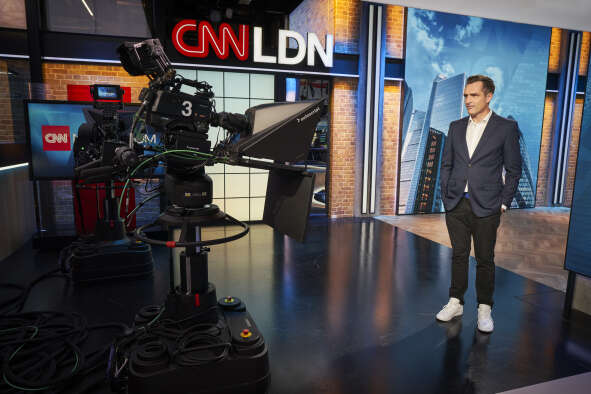
Max Foster at the CNN studio in London. Picture: Darren Bull/CNN
One of the lessons he has learned from TikTok is to strip away any distractions that might make viewers want to scroll on – or, on TV, change channel.
So Foster’s refreshed CNN Newsroom will feature an unusually big video screen behind him – not unlike a weatherman. There will also be as little on-screen furniture as possible, presenting only the current talking point on one clear banner.
Foster is also ditching his desk – though says he will bring it back to cover serious breaking news events as it emanates authority – and his suit and tie to match a much more informal speaking style than a normal news bulletin, as he hopes to be “more relatable and then try to draw the viewers in”.
Foster is often asked whether TikTok is the future of news and if TV news is dead, but he says: “I don’t believe any of that. I think that they’re all complementary, and there’s a real place for a world news bulletin for someone who’s busy wants to find out what’s happened today.”
Quickfire round
What makes a good journalist?
“A good journalist believes in democracy, I think, and sees themselves as part of a democracy. I’m quite traditional like this. I see journalism and media as a core pillar of any democracy informing the public so they can come up with their own opinions and act on it. I’m not there to give them my opinions. What I think doesn’t matter.”
Favourite TikToker?
Khaby Lame, who myth-busts “life hacks”, “because what he’s done is so clever and it absolutely understands TikTok and it’s unique to TikTok. What he does on TikTok can only be done on TikTok and he’s completely owned it”.
Most-read/watched UK news brand?
“Living in the UK you can’t really avoid the BBC as it’s pretty much half the UK media. But part of my job is keeping across all the outlets to see how they’re all reflecting it.”
What gets you out of bed in the morning?
“I love my job. It’s a vocation, it is a lifestyle really and people often talk about how I work very long hours. It’s not always a pleasure but it’s always stimulating, it’s always different and I always look forward to [it]… I do feel like I’m performing a public service so professionally that’s what keeps me going. If I wanted to be famous and rich I’d be in showbiz.”
What story are you most proud of?
“I knew a lot about business but I was still learning a lot about radio. As the last person in the door I was on night shifts and that was when the Asian financial crisis unfolded and I was on my own covering a different currency every day collapsing or a stock market, and it was really complex. But I didn’t sink, I did swim.”
Journalistic heroes?
- BBC chief international correspondent Lyse Doucet – as a mentor and someone to be admired during his time at BBC World Service
- CNN’s chief international anchor Christiane Amanpour
- Former “rottweiler of Radio 4” John Humphrys – “not always liking his questions but thinking that technique was brilliant”
- CNN senior international correspondent Nima Elbagir – “what I think is amazing about what she does is any story, any report she does will work on any platform and I think that that is the holy grail”.
Picture: CNN
Email pged@pressgazette.co.uk to point out mistakes, provide story tips or send in a letter for publication on our "Letters Page" blog

